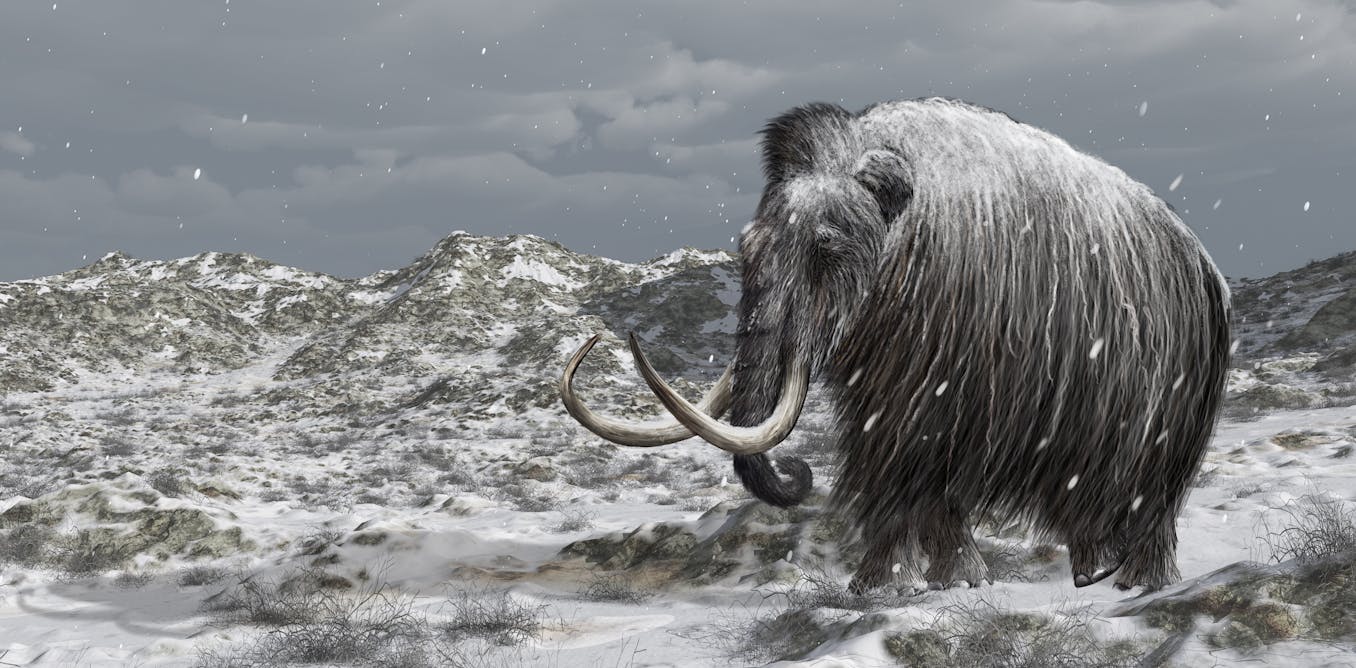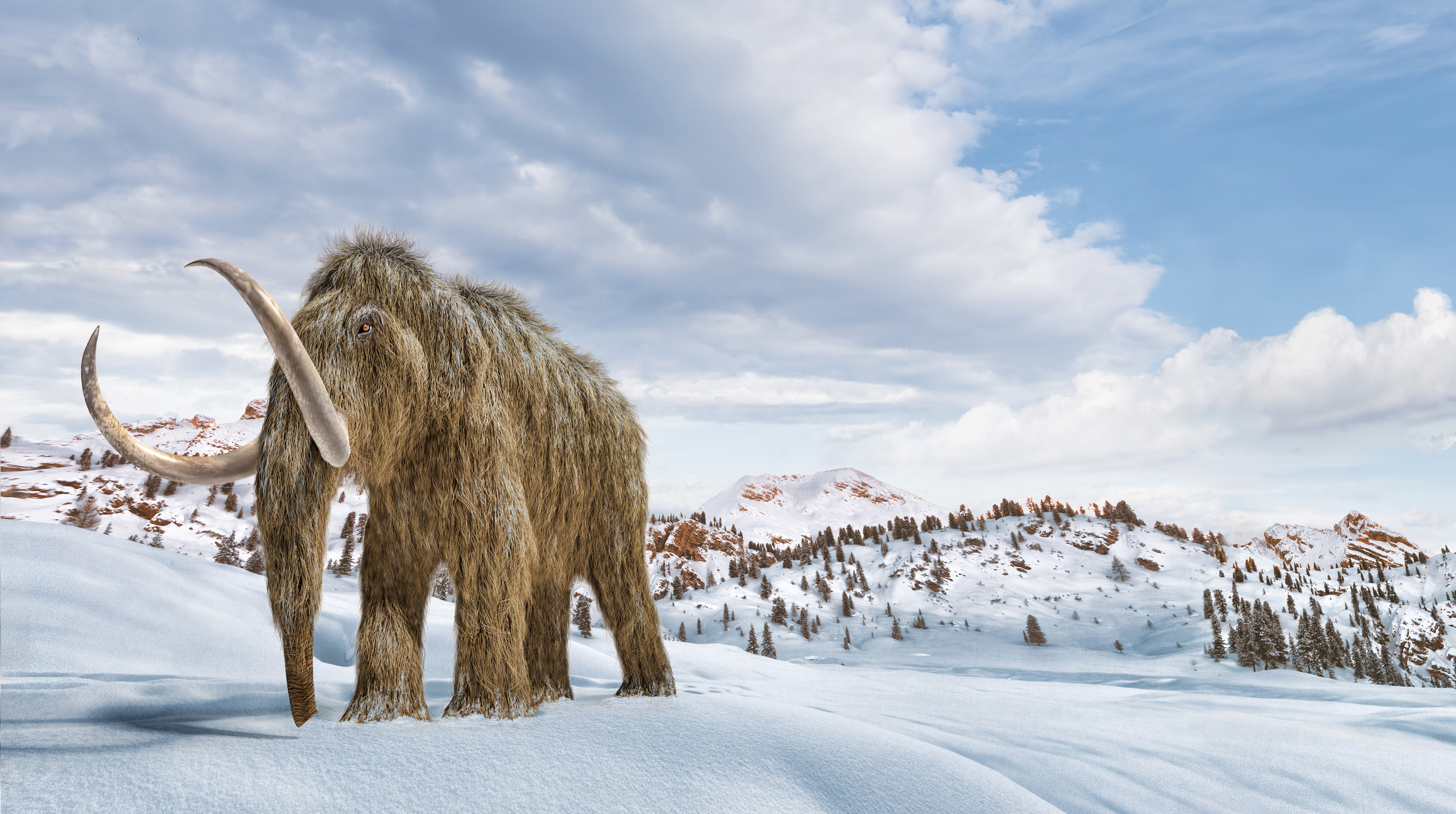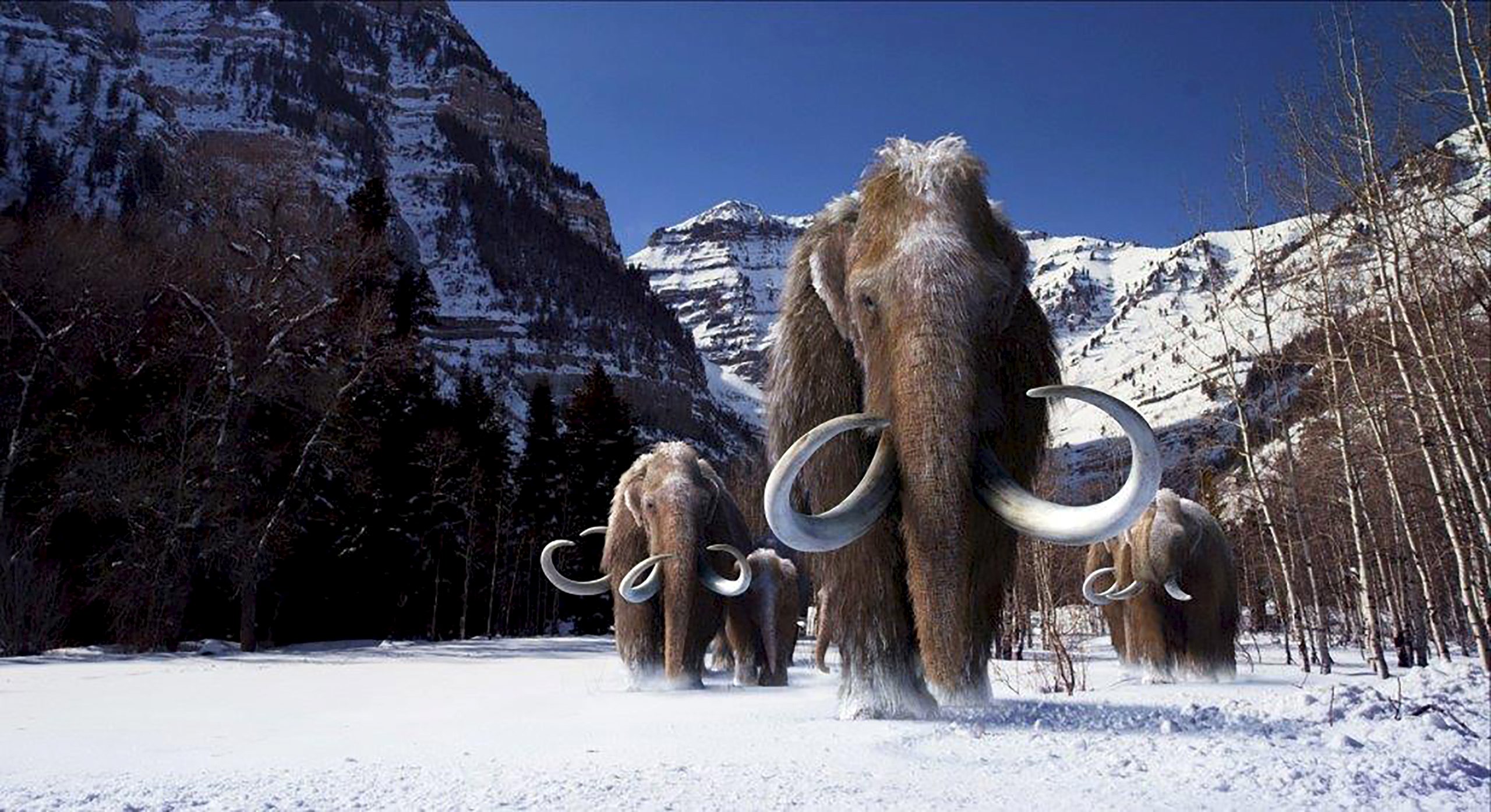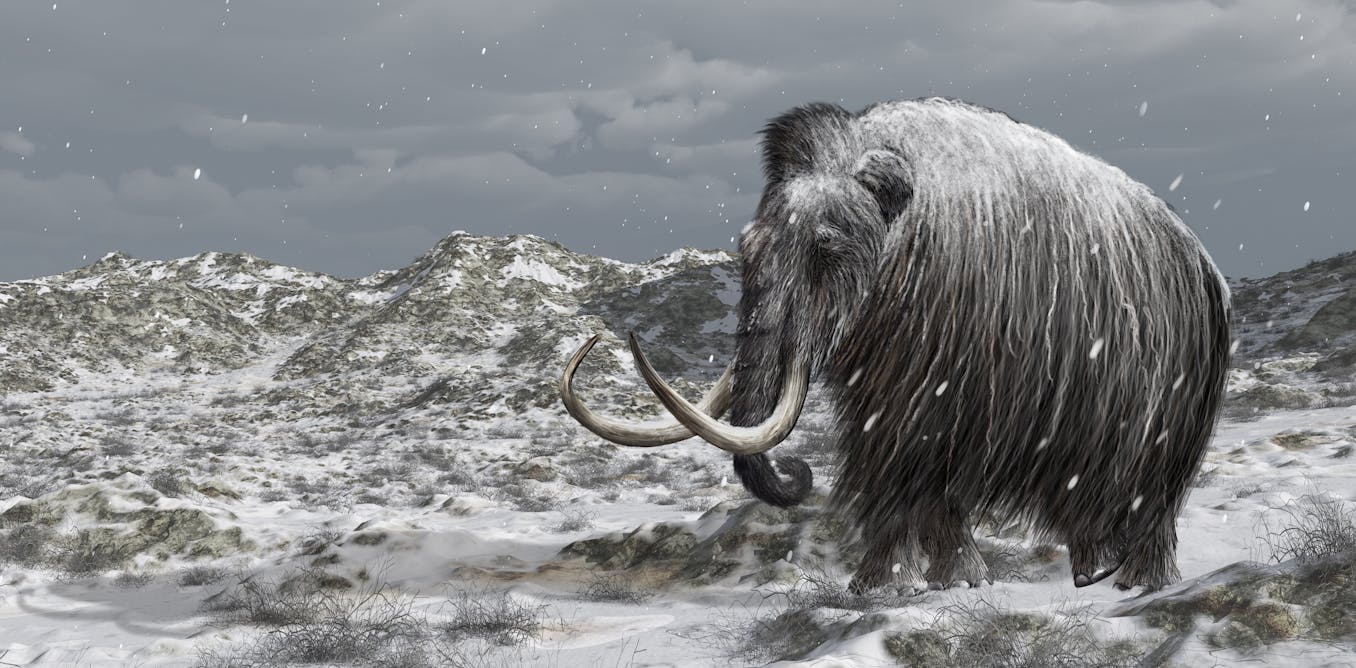Imagine wandering through an ice-cold, barren landscape and suddenly encountering a giant, hairy creature towering over you. A woolly mammoth—a relic from our ancient past! These imposing giants once roamed the icy expanses of our planet, captivating imaginations with tales of their grandeur and the mysteries surrounding their extinction.

Source: The Conversation
Woolly mammoths, known scientifically as Mammuthus primigenius, existed during a time frame stretching from about 700,000 years ago until around 4,300 years ago. They thrived in the captivating landscapes of the Pleistocene and Holocene epochs, dominating the cold tundras and inhospitable conditions of Europe, northern Asia, and North America. These colossal creatures, standing about 10 to 12 feet tall and weighing between 6,000 and 8,000 pounds, adapted masterfully to their frigid environments. With their double coat of wool—an undercoat of dense fur topped by a longer, coarse outer layer—they were perfectly suited to endure the extreme cold. A thick layer of fat beneath their tough skin added another layer of insulation, ensuring that they remained warm despite the harsh Arctic climates. Imagine a vibrant world filled with low shrubs, grasses, and sweeping steppes home to these majestic creatures, frolicking as if kings of their realm.

Source: Science World
Yet, they were not alone in this frozen empire. Early humans shared the mammoth steppe with these giants, building a relationship that entailed both admiration and conflict. Humans relied on woolly mammoths for food, materials, and tools, effectively using every part of the creature. In turn, these remarkable mammals had to continuously navigate the changing landscape, which was becoming increasingly influenced by a growing human presence. It was a dance of survival—humans questioning their next meal while mammoths altered their migrations and habitats due to the nets of humanity tightening around their existence.
As climate warmed in the aftermath of the last Ice Age, life changed dramatically for both species. With the planet’s temperature rising, vast portions of the mammoth’s habitat began to dwindle. As the tundras shrank, woolly mammoths succumbed to challenges from both competition with newly emerging species and human hunting pressures that escalated. Evidence suggests that the species harbored strong adaptability—small populations managed to survive longer than most, persisting in remote areas like St. Paul Island in Alaska. Somewhere around 4,300 years ago on Wrangel Island, one of the last bastions of woolly mammoth land, these majestic animals trailed off into extinction. This late survival grants us profound insights into their resilience and the environmental pressures they faced.

Source: The Japan Times
What keeps the woolly mammoth stirring in the hearts and minds of people today? Perhaps it is the vast uncharted mysteries intertwined with their presence in popular culture, ranging from art to movies. Interestingly, scientific conversations today hint at ambitious options of de-extinction. Could we one day see a resurrected woolly mammoth trod earth once more? Some scientists are attempting to wield cutting-edge cloning techniques to make this phenomenon a reality! The contemplation of such possibilities invites us to reflect on our responsibility to the environment and the choices we make concerning extinction and species continuity.
So, what’s your take on it? Should humanity forge ahead in resurrecting these ancient beasts of ice, or is it better to let them rest in the halls of history? Their legacy persists, urging us to engage with our past to contemplate our role as stewards of the Earth’s myriad inhabitants—both ancient and contemporary. Step back in time to discover the world of woolly mammoths—be astonished by what lingered on after the Ice Age and how their enduring presence impacts us today!
Categories: Do you know
Tags: climate change, De-extinction, Extinction, Pleistocene, Woolly Mammoth
Religion: None
Country of Origin: Global
Topic: Woolly Mammoths
Ethnicity: None



